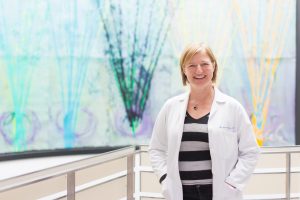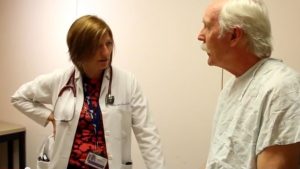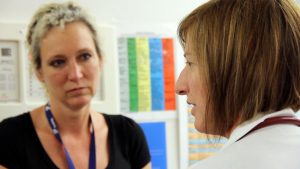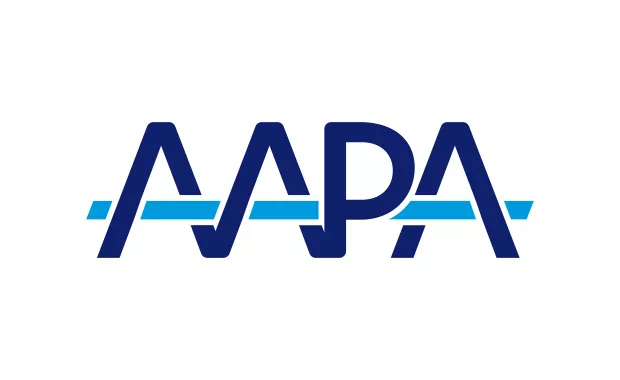PA turns transplant team service into model of care
Care coordination in transplant surgery
By Janette Rodrigues
Since accepting a position in the transplant surgery service at the University of Washington Medical Center (UWMC) in Seattle, Monica Morrison, PA-C, has transformed the transplant team’s PA service into a model for other departments within the facility.

Morrison credits her success to teamwork. She and her three PA colleagues collaborate with many physicians, including the attending surgeons, transplant surgery fellows and surgical residents who rotate through the service on a monthly basis.
They also work with nurse coordinators involved in patient care, as well as the center’s consulting services, such as the nephrology service and hepatology service, whose patients are often admitted to the transplant service pre- or post-transplant.
The surgeons rely on Morrison and her PA colleagues to care for patients pre- and postoperatively. She also sees patients in clinic, fills in for physicians, when needed, for outpatient follow-up visits, and is frequently on call.
“We have a lot of different roles within the department,” she says. “We take inpatient call, donor call and outpatient calls during the time we’re on coverage. Also we will fill in the clinical setting and the outpatient setting if needed, primarily for our liver transplant patients. But the primary work that we do is in patient management of our transplant patients, pre- and post-transplant—you name it, we do it.”
Managing care from admission to discharge
Transplant care involves sometimes complicated planning and communication. From the moment a donor is identified, Morrison is on the phone with a potential donation recipient, explaining the offer, the risks and the benefits of receiving the donation, and the potential outcomes of the procedure.
If the recipient accepts the donation, her next call is to the flow supervisor in the hospital to facilitate admission and make a bed available. Morrison is then in touch with the transplant floor’s charge nurse to coordinate the timing of the admission. From there, she is ready to perform the recipient’s history and physical, identify any potential issues and inform the surgeons and anesthesiologists of any special circumstances they need to plan for.

After the patient is admitted, Morrison gets back on the phone, calling any additional consultations or specialty services that may need to be involved in the patient’s care. This includes calling the Puget Sound Blood Center for blood typing and transfusion services, and the ICU service and the ICU charge nurse to make sure they know what time the patient will be coming out of the OR and can staff accordingly. If patients have intraoperative dialysis needs, that involves having nephrology in the loop.
All the while, she also manages the other patients on her service, who are at various points in the transplant process. As the primary contacts for the team, Morrison and her PA colleagues coordinate care from the time the patient comes into the hospital until they are discharged. According to Morrison, discharge planning begins with admission.
“You have to anticipate what that patient is going to need in order to have a safe and healthy discharge,” she says. “Many of our patients need glycemic control, so we do a lot of diabetic care and work with our endocrine service and nurse educators to help improve and maintain ideal glycemic control.
“We work with the physical therapists and occupational therapists, because many of our patients, especially our liver patients, can have prolonged hospitalizations and are extremely debilitated,” Morrison says. “They need to be cleared to be safe for discharge.”
Care coordination also involves listening to other members of the healthcare team, making adjustments to the patient’s care plan and ensuring that every aspect of the patient’s care—from pharmaceutical management to postoperative patient education—is seamless.
Morrison and her team also coordinate with a social worker to make sure that the patient is discharged into a safe environment for recovery. This can be a challenge in the northwest, as the transplant service covers a large geographic area—from Alaska to Montana.
Before Morrison and her PA team brought more coordinated care to the transplant service, the unit had a very high readmission rate. Thanks to quality initiatives implemented by the PAs, the service’s readmission rate is now the lowest at UWMC, which has become one of the top transplant centers in the country.
Hitting the ground running
Morrison’s previous roles and experiences helped her develop the leadership skills and experience needed to take on the challenges within the transplant service.
Raised in a military family, Morrison lived all over the world before completing high school and college in Washington state and then heading east to the Yale University PA program, from which she graduated in 1996. Earlier in her career, she was on the faculty of the Washington MEDEX Northwest PA Program, as coordinator for emergency medicine and technical skills. Morrison has also served as president of the Washington Academy of Physician Assistants.

Before her arrival, the role of PAs in the transplant service was not clearly defined. Morrison immediately began working with Jorge Reyes, MD, and Ramasamy Bakthavatsalam, MBBS, who appreciated the work of PAs and supported the level of autonomy PAs need in order to be successful.
Reyes is a professor of surgery and chief of transplant surgery at the University of Washington School of Medicine. He also serves as medical director for LifeCenter Northwest, the local organ procurement organization. Bakthavatsalam is a UW associate professor of surgery and urology.
“Monica is one of the best caregivers I know because she listens to patient complaints and concerns, works with her team of physicians and nurses in the development of comprehensive care, and makes sure that our patients receive the best care,” Reyes says. “She is the first one to work and the last to leave. If all we can do for a patient is to provide comfort, then that is where you will find Monica.”
He adds that Morrison always takes the time to explain procedures, plans of care, and prognosis to a patient and their families.
“She always takes the time to listen to the patient and their families and is a great patient advocate, often getting the transplant team to understand the patient’s point of view, needs, wants, and beliefs,” Reyes says. “This is perhaps the most important role of the PA in the transplant service.”
Morrison is a problem solver and a coalition builder, which has helped her not only redefine the PA role but improve patient care. She has taken on additional tasks that improve patient outcomes and streamline care, from working with an outside vendor to reprioritize lab results (so PAs on the service can alter the patient’s medication orders in real time) to taking responsibility for immunosuppression management.
“When you see a need for something to be done, that’s where the leadership comes in,” she said. “It’s not about getting other people to do things. Sometimes it’s about doing what needs to be done and doing the right thing.”
Morrison envisions the PA role in transplant services growing, and not just in the Pacific Northwest, but throughout the country.
“Because [PAs] are trained in this medical model as part of a team, that is our basis of practice and why I think we are uniquely suited for this kind of medical care.”
Learn more about Morrison, in her own words, from this transplant services video.
This article was originally published in the February 2015 issue of PA Professional. The University of Washington contributed to this report.
Thank you for reading AAPA’s News Central
You have 2 articles left this month. Create a free account to read more stories, or become a member for more access to exclusive benefits! Already have an account? Log in.





